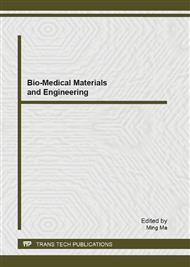p.258
p.262
p.270
p.273
p.277
p.283
p.289
p.293
p.299
Accumulation of Vitamin C and Enhanced Tolerance to Iron Deficiency Stress in Transgenic Tomato with GalUR Gene
Abstract:
The genes dominating vitamin C (AsA) synthesis in strawberry fruits may be used in increasing levels of AsA and tolerance to environmental stress in other plants by transgenic method. D-galacturonate reductase (GalUR) plays a prominent role in the regulation of the AsA biosynthetic pathway. In this study, transgenic tomato plants (Tg1, Tg2) overexpressing strawberry GalUR gene have been developed and resulted in 2.6-fold increase of AsA in fruits and 1.6-fold increase of AsA in leaves over non-transformed tomato (WT) and the levels of AsA were positively correlated with increased GalUR activity. Moreover, Tg1, Tg2 showed enhanced tolerance to iron deficiency as compared to WT. Under Fe (II) deficiency condition the plant height of Tg1, Tg2 was 1.2-1.7 times, AsA content of Tg1 was 1.8-2.8 times and Fe (II) content of Tg1 was 1.1-1.4 times as much as WT. Otherwise, AsA content of transgenic FRO2 plant (TFRO2) was more than WT but less than Tg1 and its Fe (II) content was more than WT and Tg1. The study demonstrated that the over-expression of GalUR gene enhanced the level of AsA and Fe (II) of transgenic tomato plants which had better growth than WT under iron stresses. Therefore, GalUR and FRO should be interrelate and stimulative each other.
Info:
Periodical:
Pages:
277-282
Citation:
Online since:
August 2013
Authors:
Keywords:
Price:
Сopyright:
© 2013 Trans Tech Publications Ltd. All Rights Reserved
Share:
Citation:


